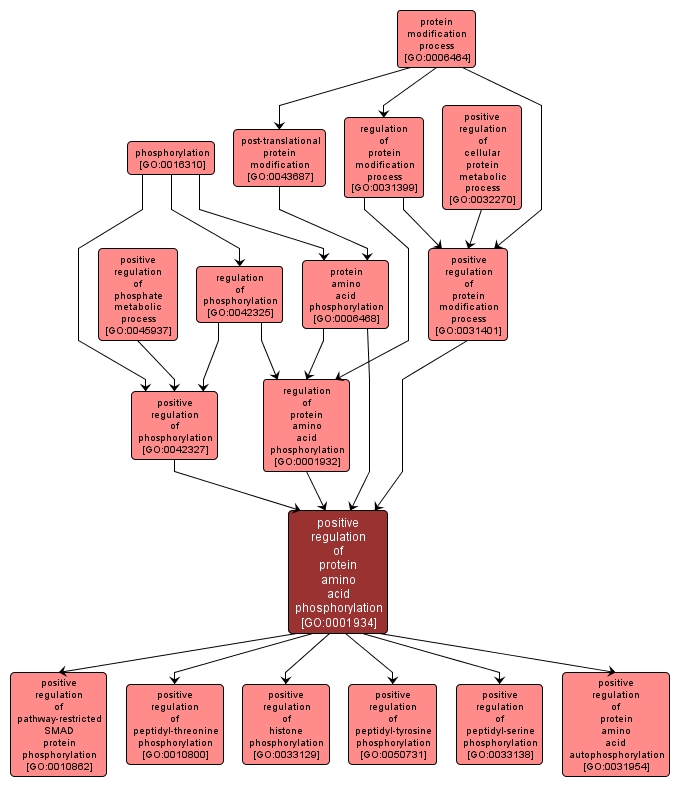GO TERM SUMMARY
|
| Name: |
positive regulation of protein amino acid phosphorylation |
| Acc: |
GO:0001934 |
| Aspect: |
Biological Process |
| Desc: |
Any process that activates or increases the frequency, rate or extent of addition of phosphate groups to amino acids within a protein. |
Synonyms:
- up-regulation of protein amino acid phosphorylation
- stimulation of protein amino acid phosphorylation
- upregulation of protein amino acid phosphorylation
- activation of protein amino acid phosphorylation
- up regulation of protein amino acid phosphorylation
|














